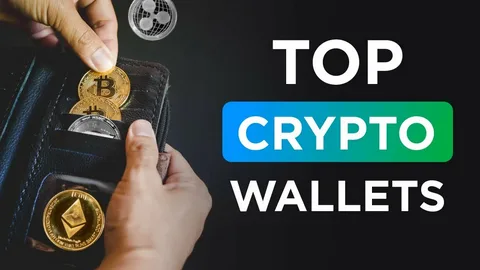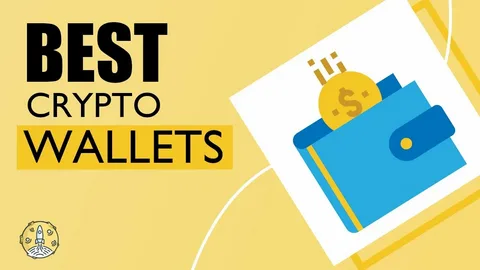Getting into crypto? Awesome. But before you buy your first Bitcoin or dabble in Ethereum, there’s one tool you absolutely need: a crypto wallet. And if you’re scratching your head wondering what even is a crypto wallet—don’t worry. You’re in the right place.
Let’s break down the best crypto wallets for beginners, in plain English, with real advice you can actually use.

What’s a Crypto Wallet, Anyway?
Imagine your crypto wallet as a digital version of your real wallet—but instead of holding cash and cards, it stores your cryptocurrencies securely. Technically, it doesn’t hold your coins in the wallet—it holds the keys that give you access to them on the blockchain. Think of it like a password manager for your crypto.
Hot Wallets vs Cold Wallets: What’s the Difference?
Hot Wallets Explained
Hot wallets are connected to the internet. They’re super convenient, easy to use, and perfect for beginners. You can access them via mobile apps, desktops, or browser extensions. Great for daily use.
Cold Wallets Explained
Cold wallets, on the other hand, live offline. They’re like a vault—less convenient but way more secure. These are hardware devices you plug into your computer when needed. Ideal for long-term holders (aka HODLers).
Why Choosing the Right Wallet Matters
Picking the wrong wallet is like giving your house key to a stranger. A bad user experience or weak security can lead to lost funds. That’s why finding the right wallet from the start sets you up for smoother, safer crypto adventures.
Key Features Beginners Should Look For
Security
Is the wallet protected by a password, biometric login, or 2FA? Can you back it up with a recovery phrase? Strong security is a must.
Ease of Use
Is the interface clean? Can you navigate without Googling every button? If it feels like decoding ancient text, skip it.
Multi-Currency Support
Bitcoin’s cool, but what if you want Ethereum, Solana, or Dogecoin? Pick a wallet that supports several cryptocurrencies.
Customer Support
Things will get confusing. When they do, you’ll want responsive support. Email, live chat, or a helpful knowledge base makes a big difference.

Top 5 Crypto Wallets for Beginners (With Pros & Cons)
1. Coinbase Wallet
If crypto had training wheels, this would be it.
Pros:
- Super beginner-friendly
- Supports NFTs and dApps
- Strong security integration with Coinbase exchange
Cons:
- Not available in every country
- Limited customization for advanced users
2. Trust Wallet
Owned by Binance, but works without needing a Binance account.
Pros:
- Supports 70+ blockchains
- Simple interface
- Includes staking and swapping features
Cons:
- No desktop version
- Limited customer support
3. MetaMask
The go-to for Ethereum fans and Web3 explorers.
Pros:
- Browser extension + mobile app
- Great for DeFi and NFT use
- Non-custodial (you control your keys)
Cons:
- Can be overwhelming at first
- Only supports Ethereum-compatible tokens
4. Exodus
Gorgeous design meets solid function.
Pros:
- Intuitive user interface
- Desktop and mobile support
- Built-in exchange feature
Cons:
- Not open-source
- No two-factor authentication
5. Ledger Nano S Plus
Old-school secure—like a USB drive for your crypto.
Pros:
- Offline cold storage
- Top-tier security
- Supports 5,500+ tokens
Cons:
- Costs money (around $79)
- Setup takes more time
Quick Comparison Table
| Wallet | Type | Best For | Supports NFTs | Cost |
|---|---|---|---|---|
| Coinbase | Hot | Total beginners | ✅ | Free |
| Trust Wallet | Hot | Mobile users | ✅ | Free |
| MetaMask | Hot | Ethereum/DeFi fans | ✅ | Free |
| Exodus | Hot | Desktop users | ❌ | Free |
| Ledger Nano S+ | Cold | Long-term storage | ✅ | $79 |
How to Set Up Your First Wallet (Step-by-Step)
- Pick a wallet (like Coinbase Wallet).
- Download the app from the official website or app store.
- Create an account with a secure password.
- Write down your recovery phrase (seriously—don’t screenshot it).
- Start receiving crypto via your wallet address.
- Explore (but slowly—start with small amounts).
Tips for Keeping Your Crypto Safe
- Never share your seed phrase. Like, never.
- Use 2FA whenever possible.
- Avoid fake wallet apps. Only download from official sources.
- Beware of phishing links. Double-check URLs.
- Consider cold storage if you’re holding large amounts.
Mistakes to Avoid When Choosing a Wallet
- Choosing a wallet that only supports one coin
- Forgetting to back up your recovery phrase
- Using shady third-party wallets
- Not checking compatibility with your device
- Ignoring reviews and ratings
Final Thoughts: Which Wallet Wins for Newbies?
If we had to crown one winner for beginners—it’s Coinbase Wallet. It’s simple, safe, and built for people just starting out. But if you want to explore a little more? Trust Wallet or MetaMask are solid picks too.
The key is this: choose a wallet that fits your style. You don’t need all the bells and whistles—just something secure and easy to use. You’ll learn more as you go.

FAQs
1. Can I have more than one crypto wallet?
Absolutely. Many people use one hot wallet for daily use and a cold wallet for long-term storage.
2. Are crypto wallets free?
Most hot wallets are free. Cold wallets like Ledger cost money but offer better security.
3. What happens if I lose my phone with a wallet on it?
As long as you have your recovery phrase, you can restore the wallet on a new device.
4. Can I store all my coins in one wallet?
Depends on the wallet. Some support multiple coins, others are limited. Always check first.
5. Is it safe to leave my crypto on an exchange?
Not really. Exchanges can get hacked. It’s safer to move your crypto to a personal wallet.